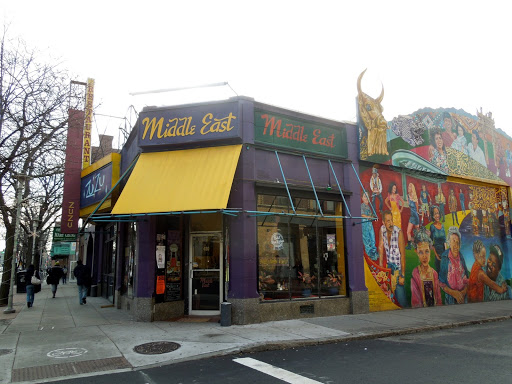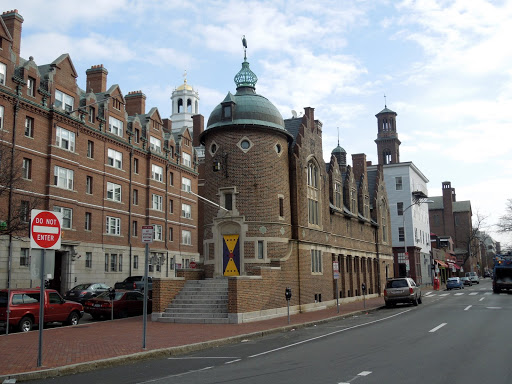
The Longfellow (aka Salt-and-Pepper) Bridge spanning the Charles River.

One of the salt shakers.

The Boston skyline from mid-bridge.

The gusting winds in Kendall Square have been known to sweep unsuspecting pedestrians off their feet, often with vaudevillian results.

The Ray and Maria Stata Center, designed by Frank Gehry. Yes, it was apparently intended to look like it was left in the microwave too long.

The Middle East in Central Square. Musical legends were born on its multiple stages. Also the beef kebab is highly recommended.

Cambridge City Hall.

The People's Republik, a Communist-themed pub. Inside, a bomb and giant military boot hang overhead.

At the Harvard Bookstore. No point in asking which authors tend to get shoplifted the most.

A Hungarian walks into a tobacconists...


The Harvard Square Pit, where punks and jugbands congregate during the warmer seasons.

Down in the Harvard Square station at midnight.

The Brattle Theatre, a cinephile's paradise. An ideal place to catch Marx Brothers comedies.

The Harvard Lampoon Castle. Not many buildings can claim to wear a Prussian pickelhaube.

The Weld Boathouse.

On the bank of the Charles River.

The John W. Weeks footbridge. Any self-respecting movie set at Harvard probably features this as its opening shot.

The First Parish Church, where I saw David Foster Wallace read from his book Oblivion soon after it was released.

Inside the Border Cafe, awaiting my lunch.

The wall outside the Harvard Loews Theater.

Harvard Epworth United Methodist Church.

"Gift of the Wind" kinetic sculpture in Porter Square.

The Rosebud Diner in Davis Square, where I was once admonished by a waitress for not finishing my clam chowder.

The Davis Square compass rose stone, a popular late night passing-out spot.

Davis Square.

Two of the "Ten Figures" sculptures that populate the square. The Somerville Theatre, behind them, is known for unique events such as showing silent films with live accompaniment by the Alloy Orchestra. It also houses a branch of the Museum of Bad Art.

A stone field house in Powderhouse Square, built during the Great Depression.

Originally a windmill, the Old Powder House in Nathan Tufts Park was used to store gunpowder during the Revolutionary War. Later it was used for storing pickles.
14 January 2012
Cambridge & Somerville
Subscribe to:
Post Comments (Atom)
No comments:
Post a Comment